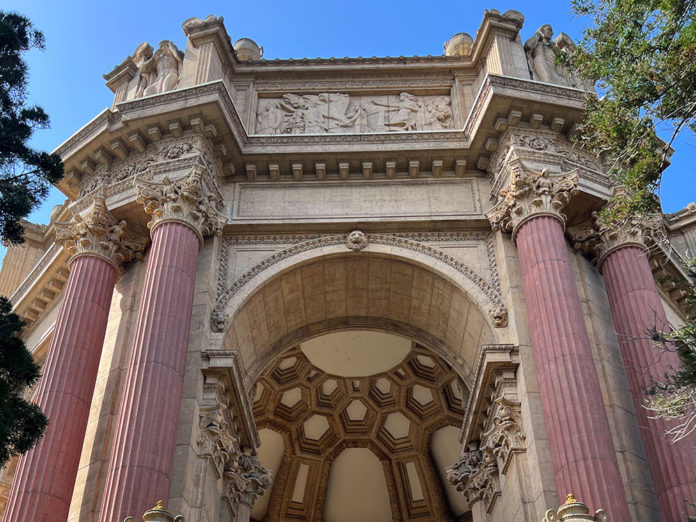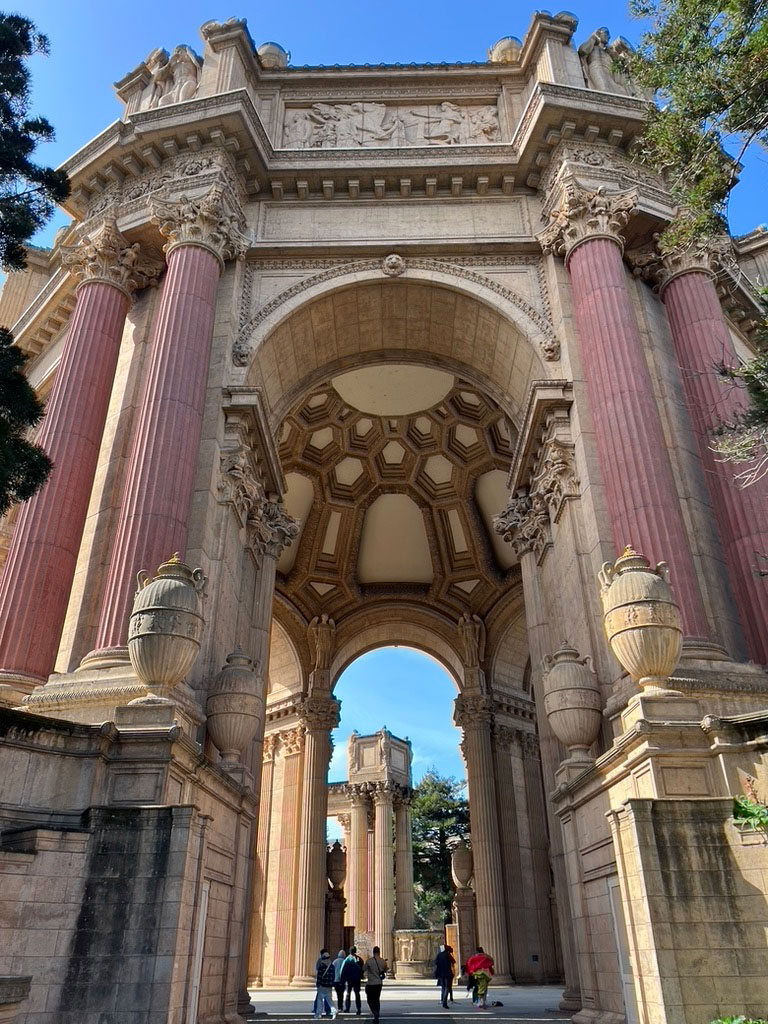
The 1915 Panama-Pacific International Exposition was the occasion for the construction of San Francisco’s elaborate Palace of Fine Arts, California Registered Historical Landmark 1064.
Recognized as a perfect blend of classical architecture and landscape, the colonnaded pergola and vaulted ceiling-ed rotunda is surrounded by a lagoon on three sides. Architect Bernard Maybeck designed this S.F. landmark in the Beaux Arts style, characterized by grandiose structures with symmetrical styling often including elaborate detailing, classical columns, pediments, friezes and cornices.

The open-air rotunda and pergola, surrounded by water, provide a cool, quiet and meditative space in the Marina District. The exhibition showcased the rebuilding of San Francisco after the 1906 earthquake and the completion of the Panama Canal in 1914, the latter a monumental project costing an estimated $16 billion in today’s dollars, with construction lasting 10 years in which more than 5,600 workers died. The grandiosity and peacefulness of this structure was designed to provide a respite from the bustle of the exhibition, as it does for San Francisco visitors today.
Fun facts: The original structure—grandiose but cheap and temporary—was built of plaster on burlap stretched over a steel frame. Restoration and rebuilding of permanent materials occurred from 1964-1974; earthquake-proofing seismic upgrades occurred in 2009.
Architectural features have a rich and intricate language. Columns come in 3 styles: Doric, Ionic and Corinthian. Doric columns have no base element and a flat capital (top); capitals on Ionic columns have scrolls, also referred to as volutes; and Corinthian capitals have ornately curled papyrus leaves as seen in this week’s photo.
A rotunda refers to a round building, usually with a domed roof and often with a vaulted interior with pendentive triangular sections for support. Fenestration refers to the arrangement of openings, including windows, doors and arches. Rustication also seen at the Palace of Fine Arts is textured masonry suggesting an older, rustic construction.
For more information, see palaceoffinearts.com.








